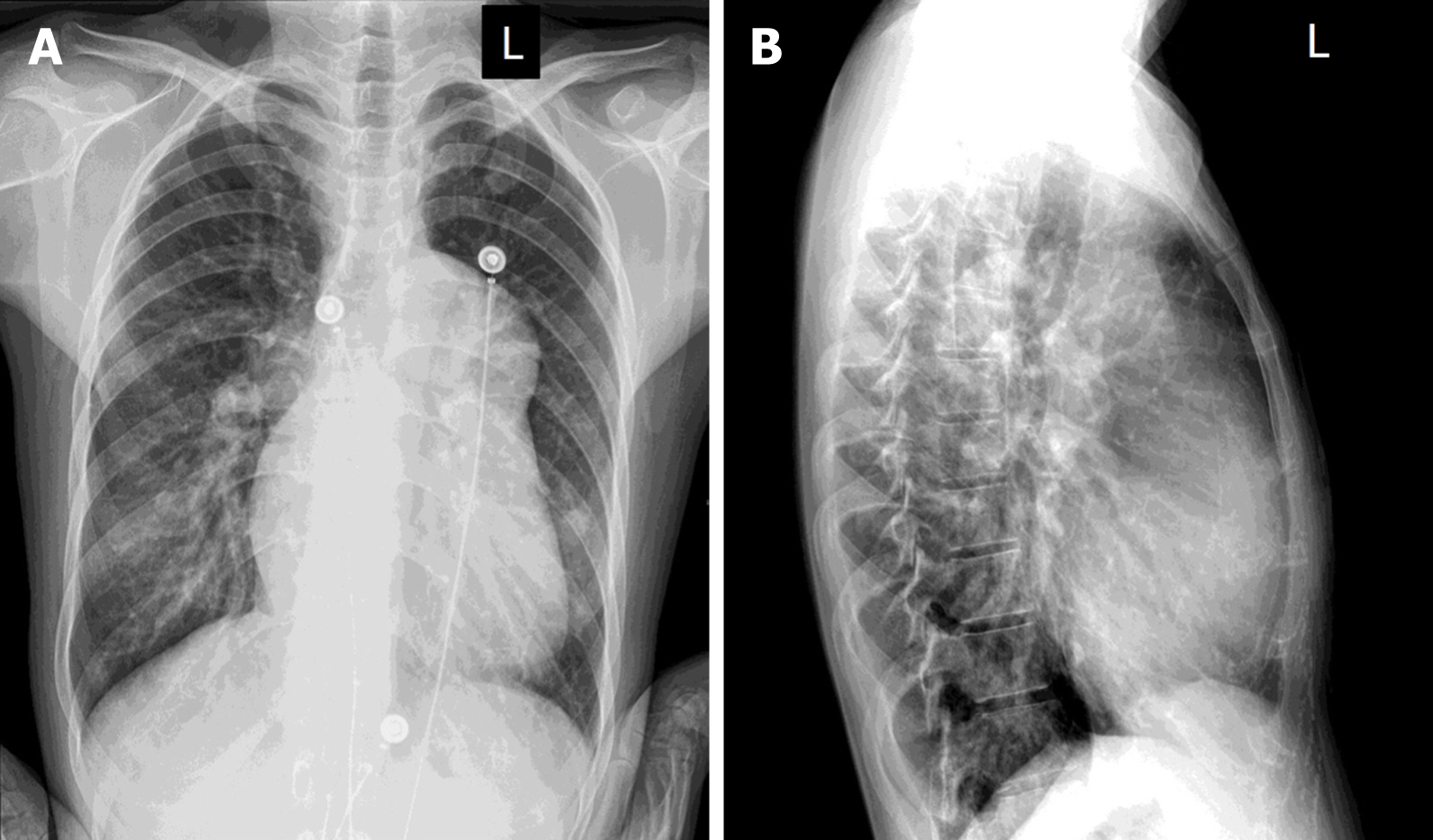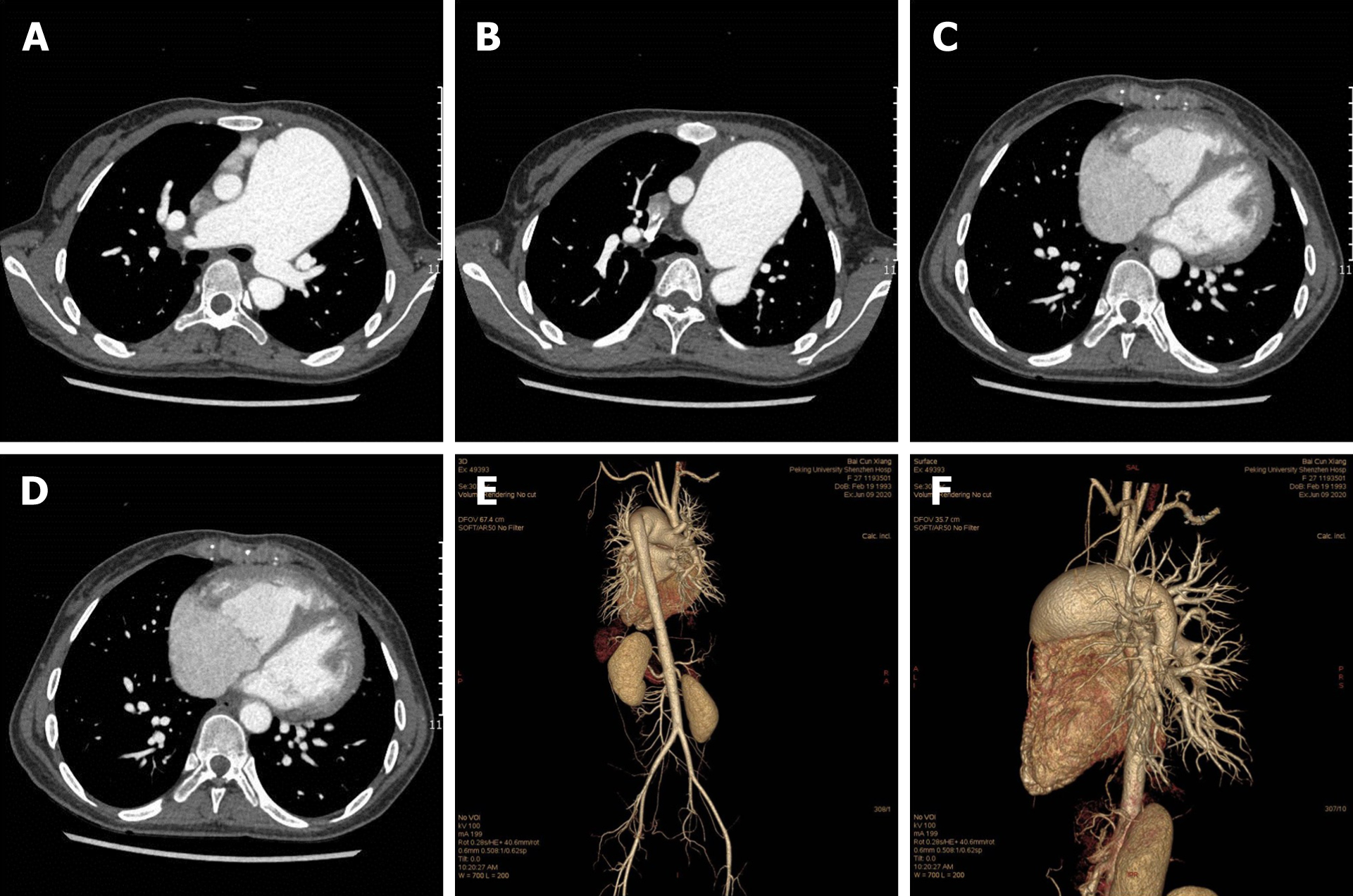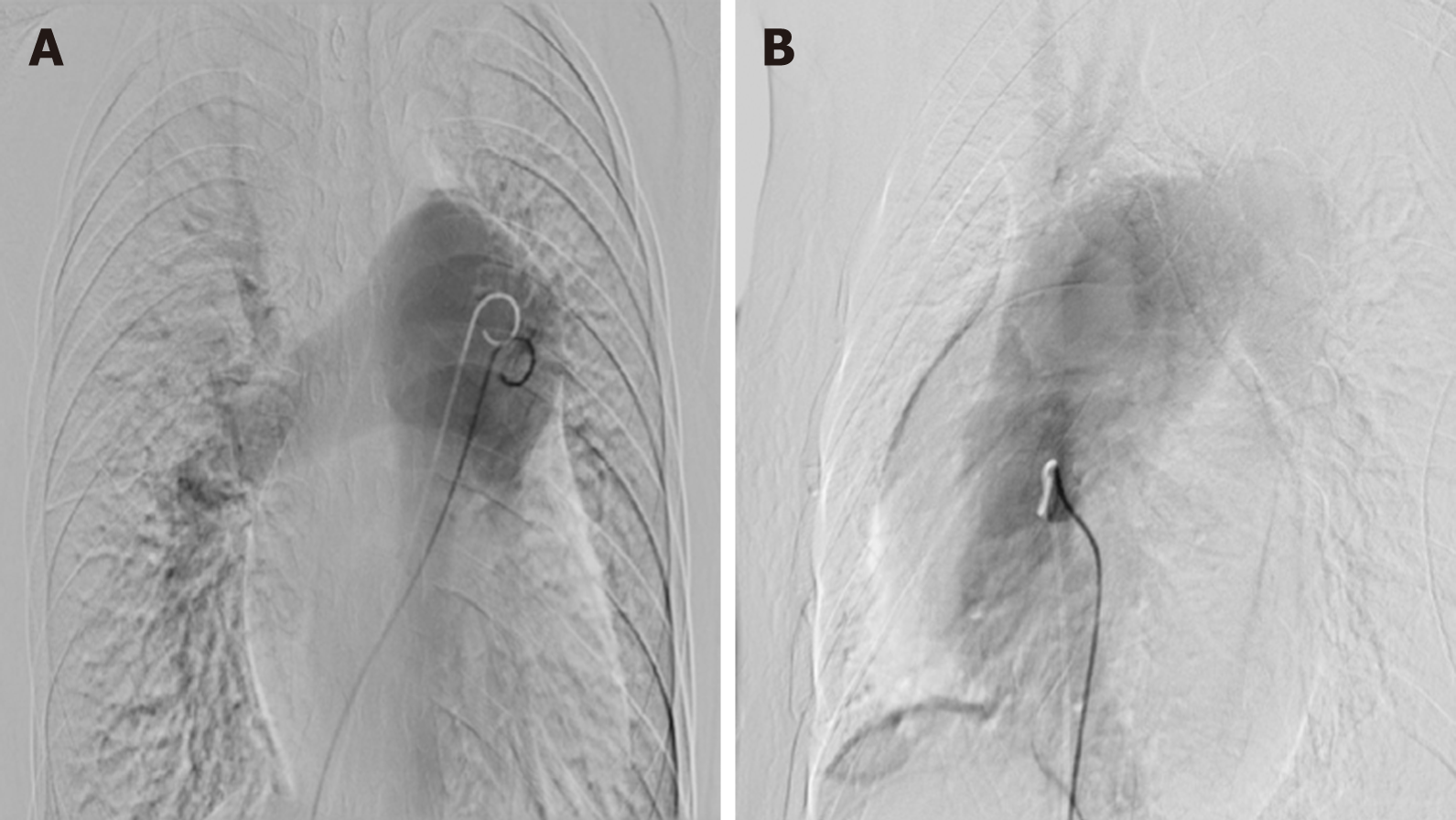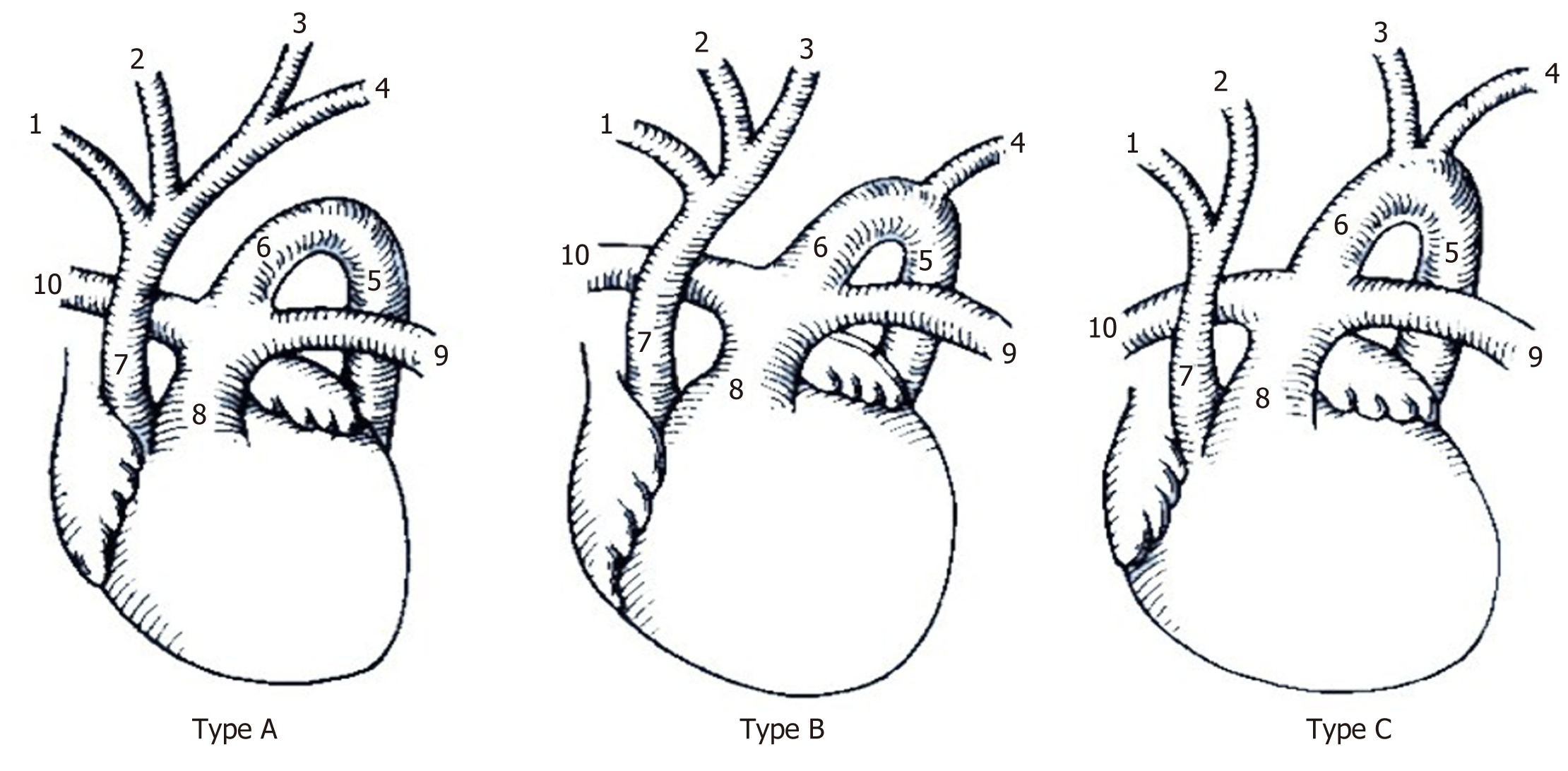Copyright
©The Author(s) 2021.
World J Clin Cases. Feb 6, 2021; 9(4): 992-998
Published online Feb 6, 2021. doi: 10.12998/wjcc.v9.i4.992
Published online Feb 6, 2021. doi: 10.12998/wjcc.v9.i4.992
Figure 1 Three-dimensional ultrasound reconstruction.
A: The interrupted aortic arch; B: Color Doppler flow imaging shows an abnormal passage between the descending aorta and pulmonary artery; C: The main pulmonary artery and its branches are dilated at the level of bifurcation of the pulmonary trunk; D: The continuity of the ventricular septal outflow tract is interrupted and the defect size is about 14 mm.
Figure 2 Radiography.
The chest X-ray shows an enlarged heart shadow, a prominent pulmonary artery and increased lung texture.
Figure 3 Computed tomography angiography.
A: The diameter of the main pulmonary artery and the right pulmonary artery are thickened at the level of the pulmonary trunk bifurcation; B: The descending aorta originates from the pulmonary trunk; C: The ventricular septal defect is seen at the four-chamber level of the heart; D: Axial image shows enlargement of the right heart; E: Volume-rendered image from a back projection depicts the interruption of the aortic arch and the descending aorta arising from the pulmonary trunk; F: Volume-rendered image from a left lateral projection depicts the pulmonary artery straddle.
Figure 4 Right ventriculography.
A: Pulmonary dilation is visible with residual lung signs; B: The left ventricle, ascending aorta and descending aorta are observed at the same time.
Figure 5 Three different types of interrupted aortic arch.
1: Right subclavian artery; 2: Right common carotid artery; 3: Left common carotid artery; 4: Left subclavian artery; 5: Descending aorta; 6: Arterial duct; 7: Ascending aorta; 8: Pulmonary trunk; 9: Left pulmonary artery; 10: Right pulmonary artery.
- Citation: Dong SW, Di DD, Cheng GX. Isolated interrupted aortic arch in an adult: A case report. World J Clin Cases 2021; 9(4): 992-998
- URL: https://www.wjgnet.com/2307-8960/full/v9/i4/992.htm
- DOI: https://dx.doi.org/10.12998/wjcc.v9.i4.992













